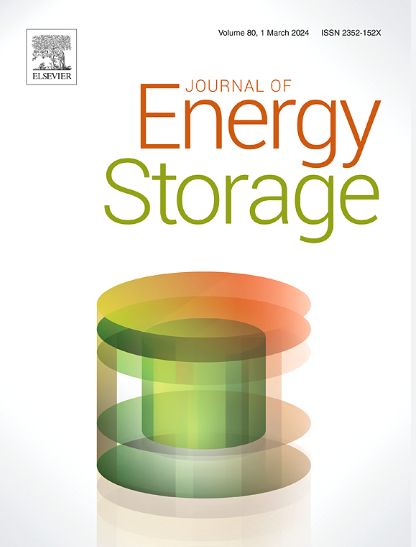先进金属离子电池中用于离子转移和存储的三维碳基结构的最新进展
IF 8.9
2区 工程技术
Q1 ENERGY & FUELS
引用次数: 0
摘要
三维碳基材料由于具有高导电性、结构多样性和优异的化学稳定性等优点,在各个领域得到了广泛的研究和应用,特别是在先进的电化学储能装置中。本文综述了3D建筑碳材料的最新进展,并评估了各种制造技术的特点和应用范围,如3D打印、模板方法、静电纺丝和气相沉积,用于设计和开发不同类型的3D碳基结构。然后从架构的角度编译了3D结构碳的各种优点,包括大表面积,高效电荷传输,良好的机械强度,高多孔结构,从而建立了如何构建经济高效的储能电极材料的整体图景。此外,根据其独特的结构特点,从发展的角度进一步评估了其在先进单价和多价金属离子电池中的应用潜力。最后,讨论了三维碳基结构面临的挑战和研究空缺的展望以及未来的发展方向。本文章由计算机程序翻译,如有差异,请以英文原文为准。
Recent advances in emerging three-dimensional carbon-based architectures for ion transfer and storage in advanced metal-ion batteries
Benefiting from numerous merits such as high electrical conductivity, structural diversity, and excellent chemical stability, three-dimensional (3D) carbon-based materials have been widely studied and applied in various fields, especially for advanced electrochemical energy storage devices. This review is dedicated to compiling current advances to 3D architected carbon materials and assessing the characteristics and scope of application of various manufacturing techniques, such as 3D printing, templated methods, electrostatic spinning, and vapor deposition, taken to design and develop different kinds of 3D carbon-based architectures. Various advantages of 3D architected carbon including large surface areas, efficient charge transport, good mechanical strength, high porous structure are then compiled from an architected perspective in an effort to establish a holistic picture of how to build cost-effective and high-performance electrode materials for energy storage. Besides, their potential applications in advanced monovalent and multivalent metal-ion batteries are further assessed from a developmental perspective according to their unique structural characteristics. Finally, the challenges and outlooks on the research vacancy and future directions for progress in 3D carbon-based architectures are discussed.
求助全文
通过发布文献求助,成功后即可免费获取论文全文。
去求助
来源期刊

Journal of energy storage
Energy-Renewable Energy, Sustainability and the Environment
CiteScore
11.80
自引率
24.50%
发文量
2262
审稿时长
69 days
期刊介绍:
Journal of energy storage focusses on all aspects of energy storage, in particular systems integration, electric grid integration, modelling and analysis, novel energy storage technologies, sizing and management strategies, business models for operation of storage systems and energy storage developments worldwide.
 求助内容:
求助内容: 应助结果提醒方式:
应助结果提醒方式:


